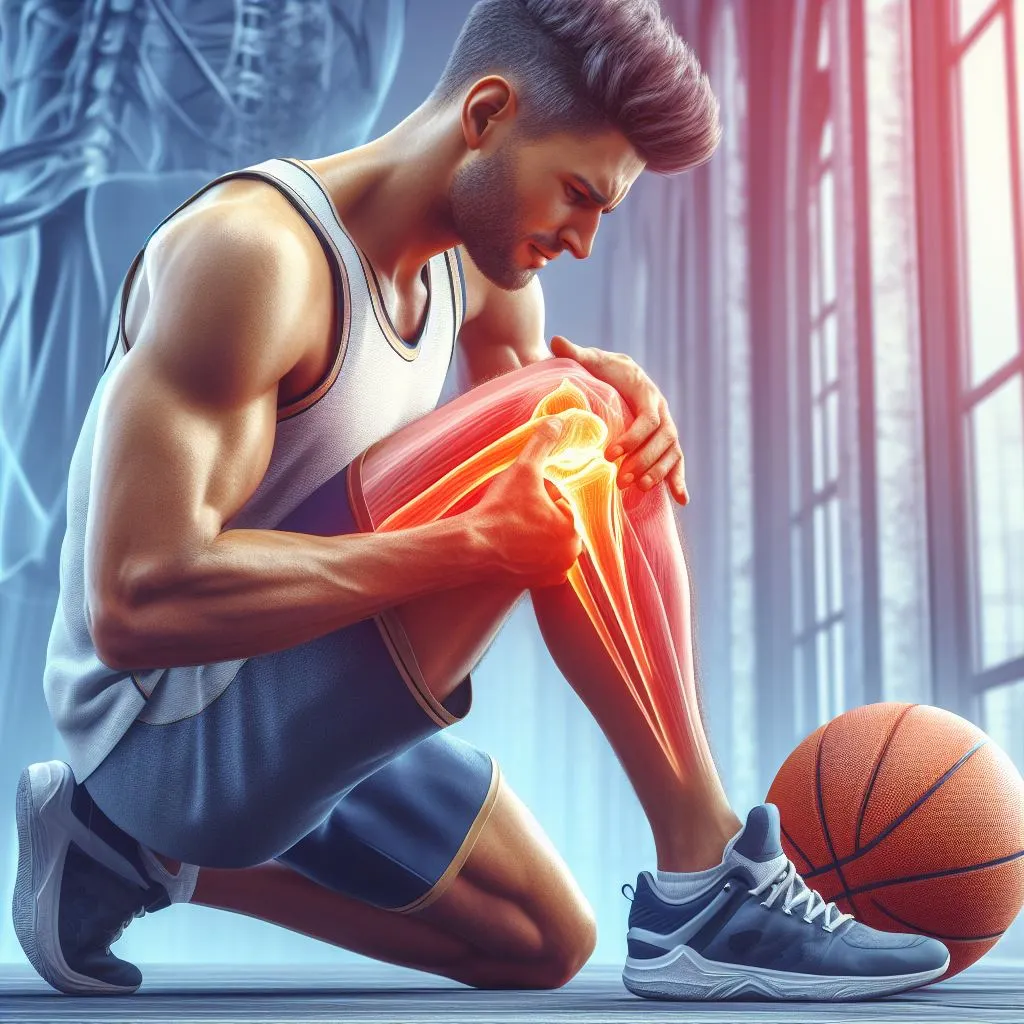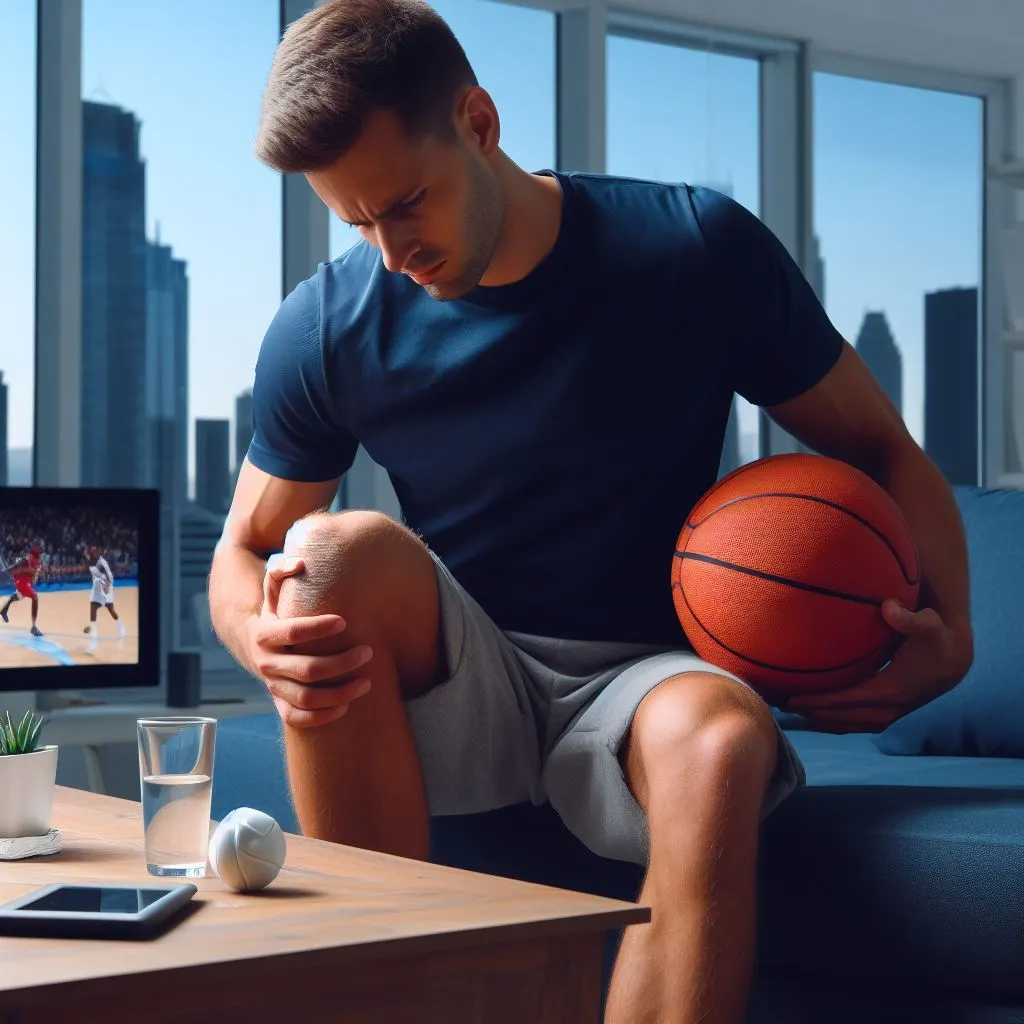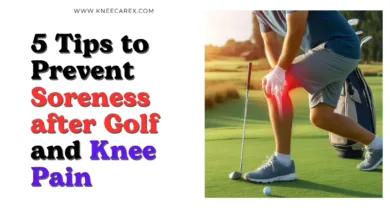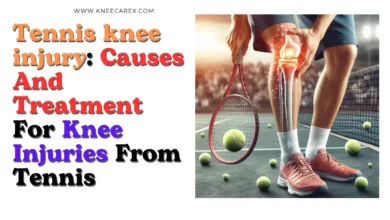Knee Pain In Both Knees For Basketball Players: A Comprehensive Guide

Constantly battling knee pain in both knees for basketball players? If so, you’re not alone. The relentless pounding, pivoting, and jumping on the court can take a toll on even the most resilient athletes. Knee pain is a common complaint among basketball players and can significantly impact performance and overall enjoyment of the game. In this article, we’ll delve into the causes of knee pain specific to basketball players, explore effective prevention strategies, and discuss treatment options to help you get back in the game pain-free.
Contents
Understanding Knee Pain in Basketball:

What’s Going On Inside Your Knees:
The knees are important joints that help in movement and support the body’s weight. They comprise an intricate web of cartilage, tendons, ligaments, and fluid, with the meniscus as a shock absorber—the knee joint permits rotational movement because of how muscles and ligaments interact. By exercising, maintaining good alignment, and controlling weight, one can preserve optimal knee health by being aware of these internal mechanisms.
Check Also: The Ultimate Guide to Knee Pain After Basketball: Causes, Treatment, and Prevention
The Basketball-Knee Pain Connection:
Because of its high impact, basketball can strain the knee, resulting in overuse ailments such as sprains of the ligaments and patellar tendinitis. Muscle imbalances and poor biomechanics can also cause knee discomfort. Ankle risk may be increased by hamstring or quadriceps weakness. Inappropriate movement patterns and landing mechanics might put too much strain on knee joints, leading to persistent pain. Knee discomfort can be relieved, and further injuries can be avoided by implementing focused strengthening exercises and appropriate training.
Prevention is Better Than Cure:
Regarding health, prevention is preferable to treatment because it lowers the chance of chronic illnesses and enhances general wellbeing. Making healthy lifestyle choices, being screened early, and emphasizing mental health can all help prevent health problems from worsening before they worsen. By putting prevention above cure, people may take charge of their health and live longer, happier lives free from needless suffering and medical interventions.
Warm-Up Routines That Work:
Regarding health, prevention is preferable to treatment because it lowers the chance of chronic illnesses and enhances general well-being. Making healthy lifestyle choices, being screened early, and emphasizing mental health can all help prevent health problems from worsening before they worsen. By putting prevention above cure, people may take charge of their health and live longer, happier lives free from needless suffering and medical interventions.
Footwear and Knee Health:
Our knee health is significantly impacted by our shoes, particularly when engaging in physical activity. Wearing supportive, cushioned shoes helps absorb shock, lowering tension and preventing injuries. Wearing high heels for extended periods can strain your knees, but adequately fitting athletic shoes improve stability and lessen overuse issues. Making thoughtful shoe selections is essential for maintaining knee health over time.
When Pain Strikes:
Although pain can be crippling and overpowering, it can also foster resilience and personal development. It displays our innate strength and capacity to face difficulties. When we embrace pain, we may meet our weaknesses, grow from our anguish, and emerge from it with renewed resilience. By seeing suffering as a teaching tool, we can allow ourselves to grow and become more powerful. We can become more resilient and fully ourselves during challenging times by practicing compassion.
First Response to Knee Pain:
Evaluating the situation and refraining from pushing through knee pain is critical. Disregarding knee discomfort might worsen the problem because it indicates a need for care. To correctly manage the health of your knees, think about non-invasive therapies like physical therapy and specialized exercises, and consult a professional.
Are you experiencing sharp pain in your knee?

Long-Term Strategies for Knee Health:
Long-term knee health can be enhanced by keeping a healthy weight, doing low-impact activities, using appropriate forms, and eating a diet rich in anti-inflammatory foods. Frequent exercise, nuts, fruits, vegetables, fatty fish, and nuts can all help to lower inflammation and promote joint health. Maintaining good knee health for years can be achieved by routinely treating pain or discomfort and seeing a doctor.
Beyond the Basics:
To become proficient in a skill, one must delve deeper into the subject matter to find subtleties and complexity. This kind of thinking makes it possible to use creative methods and viewpoints, which increases success. Going beyond the fundamentals develops skills, encourages creativity, and provides fresh perspectives. This openness to venturing into unknown waters fuels our development and progress, lifting us above mediocrity and towards greatness. Accept the challenge to advance from proficiency to mastery.
Understanding the Role of Nutrition
Nutrition greatly influences our whole health, which also impacts mental and emotional stability and physical growth. Minerals and vitamins are examples of micronutrients that are necessary to sustain biological processes. Food consumption has been found to affect mood; nutrient-dense natural meals have been shown to improve mood and cognitive performance, whereas processed diets may have the opposite effect. Making educated food decisions can be facilitated by knowledge of these relationships.
Mental Health and Coping with Injury:
Nutrition greatly influences our whole health, which also impacts mental and emotional stability and physical growth. Minerals and vitamins are examples of micronutrients that are necessary to sustain biological processes. Food consumption has been found to affect mood; nutrient-dense natural meals have been shown to improve mood and cognitive performance, whereas processed diets may have the opposite effect. Making educated food decisions can be facilitated by knowledge of these relationships.
FAQ’s
Why do my knees hurt as a basketball player?
Basketball players frequently jump, pivot, and make rapid adjustments, which can lead to overuse issues in their knees. Stretching and warming up insufficiently can increase the danger. Knee discomfort can also result from biomechanical muscle strength and foot alignment abnormalities. Addressing these problems with focused exercises and appropriate footwear is essential to avoid further injuries.
Why am I having knee pain in both knees?
Because of their frequent use, repetitive strain injuries, and muscle imbalances, basketball players frequently suffer from chronic knee discomfort in both knees. Incorrect biomechanics and foot placement may also be factors in the pain. Seeking expert advice from a sports medicine specialist or physical therapist can assist in determining the underlying causes of discomfort and offer focused interventions to maximize athletic performance. Resolving these problems quickly is essential to sustaining performance.
How do NBA players deal with knee pain?

How do I stop my knees from hurting in basketball?
Focus on correct conditioning and developing knee muscles with focused exercises, stretches, and flexibility activities to prevent knee pain when playing basketball. Wear shock-absorbing, supportive shoes, and make sure your body is positioned correctly as you move. To reduce the chance of overuse injuries, allow the body to recuperate from repeated stress and impact by implementing rest days and ice therapy following games.
Conclusion: Knee Pain In Both Knees For Basketball Players
In conclusion, knee pain can be a common issue for basketball players, especially those who engage in frequent and intense physical activity. It is crucial for players to prioritize proper warm-up routines, strength training, and flexibility exercises to prevent and alleviate knee pain. Additionally, seeking professional medical advice and treatment is essential for addressing any persistent or severe knee discomfort. By taking proactive measures to care for their knees, basketball players can reduce the risk of injury and continue enjoying the sport they love. Remember, prioritizing knee health is key to staying in the game and performing at your best!




